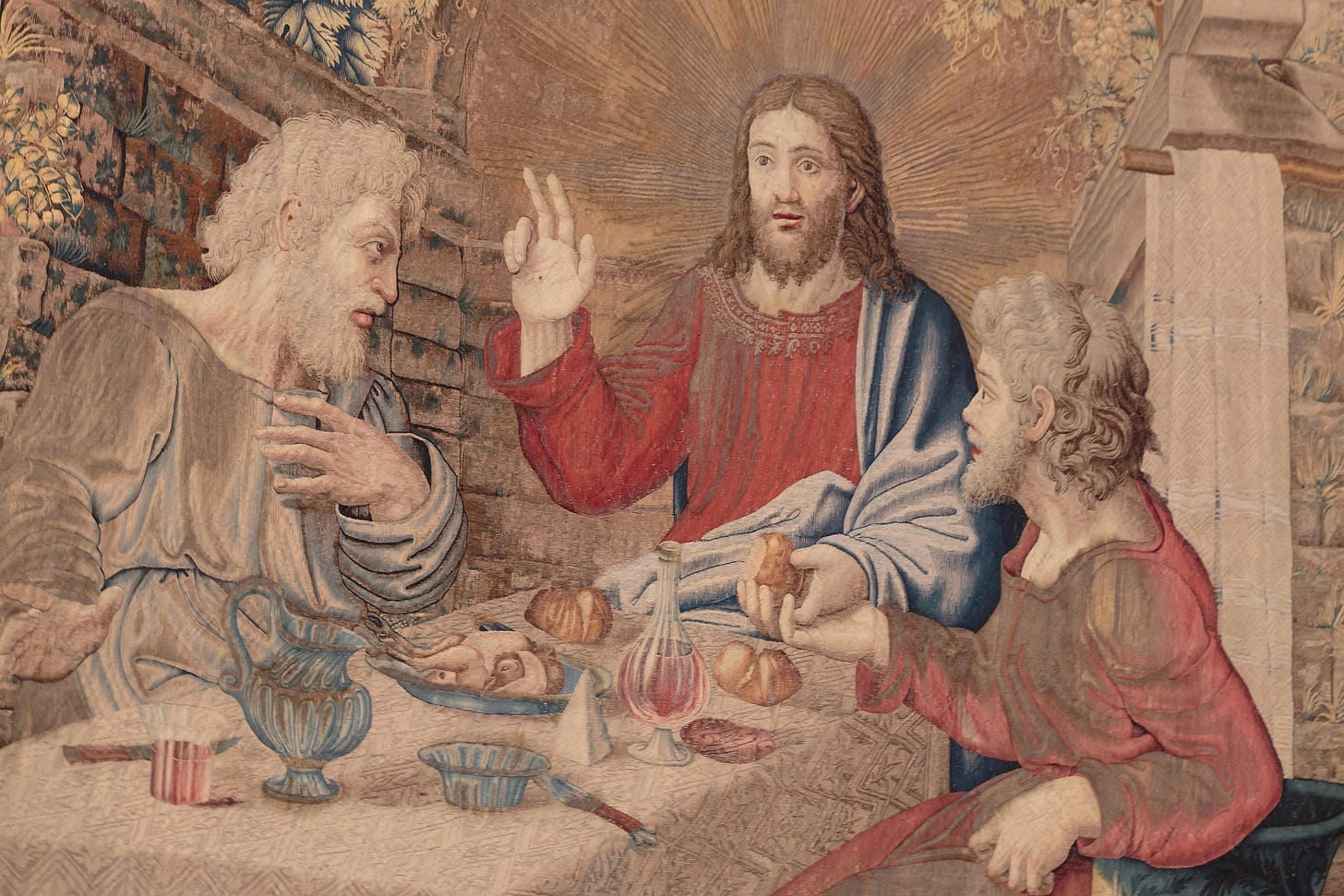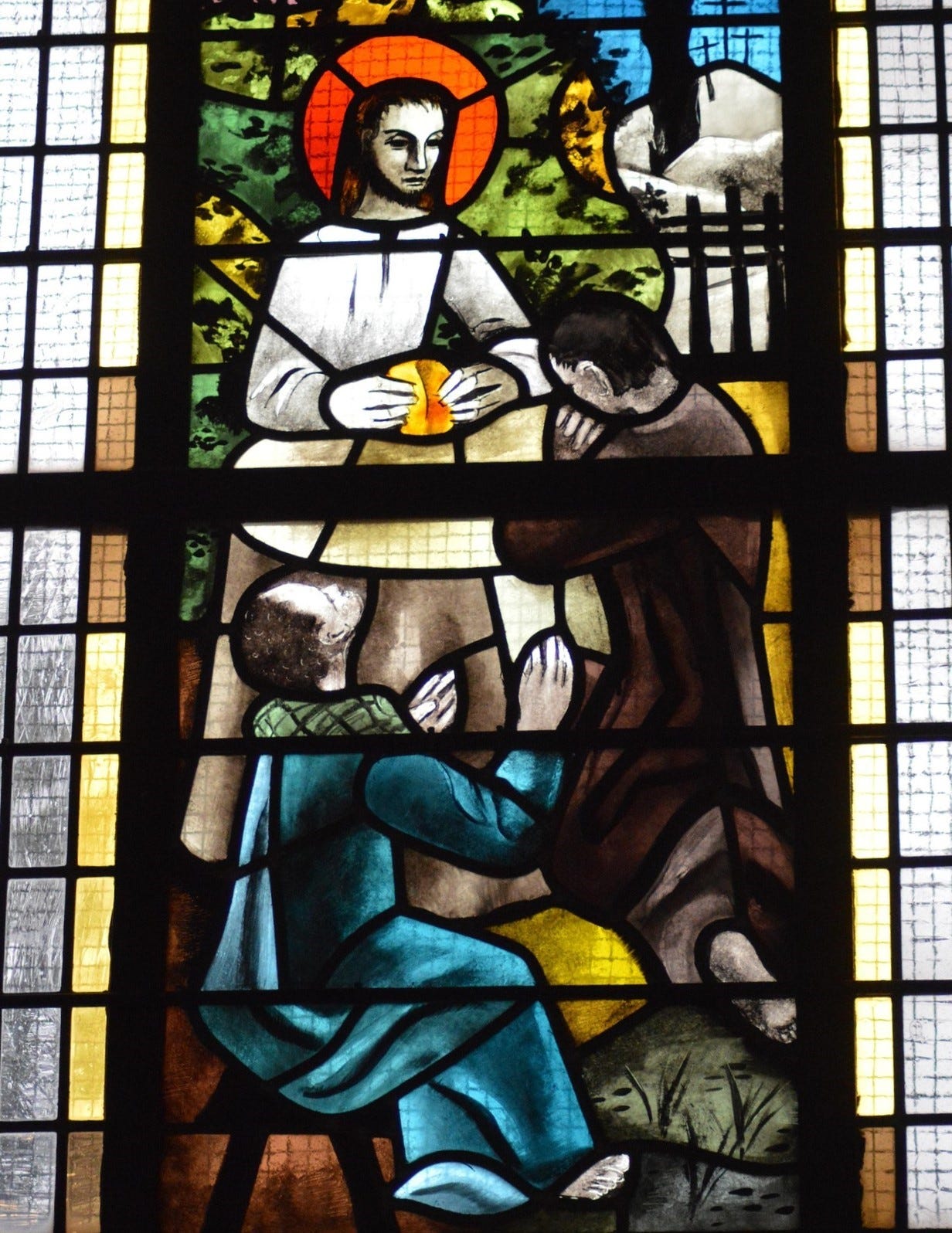What is pilgrimage? Learning from the Emmaus story
This reflection explores how the Emmaus story reveals the transforming power of walking, community, and recognition in the ordinary.
Dear Pilgrims,
People often ask me: what exactly is a pilgrimage? There are as many answers as there are pilgrims. When I walk with people, I show them what pilgrimage means for me and invite them to try it for themselves.
Pilgrimage can take many forms. There are processions to holy places such as Rome, Santiago, or Lourdes. There are silent retreats and joyful youth pilgrimages.
Sometimes it is as simple as a small group walking. They form a temporary community, share a path, a short spiritual impulse, and a time of silence.
Because there are so many meanings, I keep returning to one short but rich story: On the road to Emmaus (Luke 24:13–35).
At first it seems like a simple pilgrimage. Two disciples leave a city, hurt and confused after the death of Jesus. A stranger joins them. By evening they are changed. They recognise him and go back to tell the others.
This story is short, but it contains much of what pilgrimage can mean today. Below I summarise it and then draw out six elements that make Emmaus a good model for modern pilgrimage.
The story: On the road to Emmaus (summary)
Two disciples walk from Jerusalem to Emmaus. They talk about recent events: the arrest and death of Jesus and the news of an empty tomb.
A stranger joins them, listens, and explains the Scriptures. When they invite him to stay, he takes bread, breaks it, and they recognise him.
Their hearts had already been “burning” while he spoke. At once, they return to share what happened.
1) The road as a place of understanding
Walking changes how we think. The Emmaus story shows how movement can loosen fixed thoughts and allow new insights to grow. As we walk, mind and heart begin to connect.
For pilgrims today, the message is simple. Start walking and let your questions unfold step by step instead of forcing answers.
2) Community as spiritual practice
The disciples do not walk alone. The stranger listens, explains, and stays. Pilgrimage is about walking with others. We walk with people, with texts, and with God.
Being part of a community teaches us to listen deeply, ask thoughtful questions, and hold space for each other’s doubts. This social side is not optional. It is an essential part of the experience.
3) Walking through in-between times
The Emmaus story takes place in a moment of change. The disciples are grieving, confused, and unsure what comes next. Pilgrimage often begins in such a space. We set out when something in life feels unfinished or uncertain.
Walking gives that uncertainty a shape. The steady rhythm of the road holds us while things inside us shift. It lets us pause between what has ended and what has not yet begun.
4) Recognition in the ordinary: bread, words, silence
The turning point is not a big miracle. It is a meal. The sacred appears in the ordinary. We see it in breaking bread, sharing a table, and listening in silence.
Pilgrimage teaches us to look for the divine not only in holy places but also in daily acts.
5) Scripture and story as companions
As they walk, Jesus opens the Scriptures. This is not abstract study but a living conversation.
Pilgrimage invites us to read texts with our bodies as well as our minds. We let stories walk with us and shape how we see.
6) Return and sharing
The Emmaus story ends with a return. The disciples go back to tell others. Pilgrimage rarely ends in escape. It sends us home renewed.
The road changes the way we see the ordinary world and equips us to live differently.
A simple Emmaus exercise (30 minutes)
Walk for about 30 minutes in a safe or familiar green space.
During your walk, reflect on the question ‘If you were one of the disciples on the road to Emmaus, what would you tell Jesus?’ or simply pay attention to your breath.
Stay silent and notice what arises. After the walk, try to sum up your experience in one sentence. You are very welcome to send me your sentence. I would love to hear what stayed with you.
Pilgrimage is not a quick fix. It works quietly, step by step. Reading, walking, sharing, and returning can help us see ordinary moments with new attention and curiosity.
Buen Camino,
Alexander



